Just trying to see if this sticks, other than that this board is just for a new interest of mine // no gods or goddesses worshiped otherwise why would I call myself an atheist lol XD
Don't wanna be here? Send us removal request.
Text
Hekate's Many Names Part 1 of 3
Hekate’s Many Names

Kleidoukhos, Dadophoros, Eilytheia, Basillea, all names that Hekate has born through Her history. Just four of well over a hundred titles and names and qualifiers and descriptors. Each gives us a different perspective of our Goddess, though no name is sufficient to encapsulate Hekate who is the Soul of the World. Epithets are perspectives, new or old, that Her followers have found appropriate. Some, like Perseia, describe elements of Her mythos. Others may tell us where She had a temple or a cultus, such as Zerynthia. We learn via epithets that She is bright-coiffed, beautiful, maidenly, or angry-voiced, wild, and sepulchral.
When a priest or a devotee puts pen to paper and strives to describe Hekate in the poor terms of language, epithets can provide the means to begin.
I have arranged my study of epithets in terms of veracity, not because I only want to use the oldest and most original, but because I believe it is important to recognize how Her titles and descriptors have grown and changed as the world as shifted. Being honest about whence an idea originated and when allows for a greater grasp of what is being created today.
I owe many people for this project. Florian Schlie, Tina Georgitsis, Sorita d'Este, Tara Sanchez, Natalie Baan, Melissa McNair, Nikki Salvatore, Katerina Dogiama-Azeri as well as the community of the Covenant of Hekate as a whole, and the group known as Hekate’s Crossroads as well. Without them and their support, I never would have created this project.
If you can assist in this work, please email me at [email protected] with your insights, preferably with a source, and permission whether I can mention your name in later editions of this project.
Ultimately, my hope is that this on-going exploration of Hekate’s names helps the community of Hekate’s devotees to find inspiration and insight into our vast and enigmatic Goddess. May it be a blessing upon your path, a guidepost, and a light in moments when you need it.
EDIT: Updated Feb. 13, 2016 with almost 100 new epithets, thanks to this wonderful list. Some of the entries didn’t pass my personal standards for making it into the most historical list, but they are all valuable, and all will probably eventually be added to the first category. My kingdom for a good original Greek copy of the PGM… that I can afford.
EDIT: updated 5/27/2016 with a slew of new epithets.
EDIT: updated 8/13/2018 with a few new epithets. Thanks to Cyndi Brannen from Patheos’ Keeping Her Keys for the help with these!
Epithets with Historical Precedence
?: Subduer of All: Greek Magical Papyri Hymn IV 2714-83 ?: Fawn-slayer: Hymn to Selene-Hekate-Artemis, Greek Magical Papyri IV 2714-83. ?: Greatest Overseer: Hymn to Selene-Hekate-Artemis, Greek Magical Papyri IV 2714-83. ?: Who Pours Forth Arrows: Hymn to Selene-Hekate-Artemis, Greek Magical Papyri IV 2714-83.
?: Adorned in Full Armor: The Chaldean Oracles. See Stephen Ronan. ?: Holds the Helm of All: The Chaldean Oracles. See Stephen Ronan. ?: Dog-slaying: Lycophron. See also Simon Hornblower. ?: Mistress of Dreams. See Stephen Ronan and Fontenrose’s Python. ?: Swordbearing: See Stephen Ronan and Sarah Iles Johnston.
A
Abronoe: Gracious: PGM IV 2441-2621. See Pachoumi’s “A List of Epithets from the Greek Magical Papyri…”. Admetos: Unconquered: PGM IV 2708-2784. Also said of Atalanta. Aenaos: Eternal, Ever-flowing: PGM IV 2785-2890. Agallomenen elaphoisi: Rejoicing in Deer: The Orphic Hymn to Hekate. Agia: Sacred, holy, saint: PGM IV 2241-2358. Aglaos: Radiant, bright, beautiful, pleasing: PGM IV 2241-2358. As a term, aglaos connotes festivity and song. Agriope : Wild-eyed, Fierce-faced, Savage-watcher, wild-voiced : A name associated with Eurydice, Orpheus’ wife, likely came to be attached to Hekate when the two were conflated. From Orpheus and His Lute: Poetry and the Renewal of Life by Elisabeth Henry, SIU Press, 1992 p. 3. Also, Maass’ Orpheus, 1895. Aidonaea: of the Underworld (lit. of Hades): PGM IV. 2708-84 and PGM IV. 2855. Beware spellings such as Adonaea, which more properly refers to the gardens dedicated to Adonis. Aidonia also may apply to a site in Mycenaea. Aimopotis: Blood-drinker, murderer. Footnote from Catharine Roth discussing the term and its association with Hekate on www.stoa.org Aionaios: Eternal: PGM IV 2241-2621. Aizeos: Vigorous: PGM IV 2241-2358. Akrie: Extreme: PGM IV line 2277. Aktinochiatis: Radiant-haired, with rays for hair: PGM IV 2241-2358. Aktiophis: of unknown meaning: various hymns to Selene and Hekate in the Greek Magical Papyri. Alexeatis: Averter of Evil: A 5th c. BCE inscription to Enodia mentioned by Sarah Iles Johnston in Restless Dead. Alkimos: Strong, stout, brave, powerful: PGM IV 2241-2358. Ambrotos: Immortal: applied to all the Gods and many Titans. PGM IV 2241-2358. Ameibousa: One that transforms: Oracle Table from Pergamon dedicated to Hekate. (Special thanks to Florian Schlie for the information.) Amphiphaes: Circumlucent: Proclus. Damascius. trans. by Stephen Ronan. Amphiprosopos: Double-faced: The Chaldean Oracles, also Reading Plotinus: A Practical Introduction to Neoplatonism by Kevin Corrigan. Amphistomos: Double-mouthed. Proclus’ In Timaeus. Anassa: Queen: The Orphic Hymn to Hekate. Applied to a variety of Goddesses. Anassa Eneroi: Queen of the Dead: A title which is perfectly appropriate, though historically was most often applied to Persephone. theoi.com/cult/hekatecult.html Angelos: Messenger: The Chaldean Oracles. Associated with numerous Gods. Karl Kerenyi discusses the shared role of Angelos between Hermes and Hekate in Hermes: Guide of Souls. Antaia: She Who Meets, Besought with prayers: Sophocles’ Rootcutters. Aoroboros: Devourer of the Untimely Dead: PGM IV 2785-2890. Apanchomene: The Hanged One, The Strangled, One Who Hanged Herself: assoc. with Artemis in particular, but Farnell mentions a story about a woman Artemis named Hekate after she hanged herself. Aphrattos: Unnamed One: In “Taranto” by Enzo Lippolis, Salvatore Garraffo, Massimo Nafissi by the Instituto per la Storia e l'Archeologia della Magna Grecia, 1995, p. 194- 5.
Apotropaios: Averting, Averter: Supplementum epigraphicum Graecum (SEG) 42 1816. Archikos: Royal: The Chaldean Oracles, xx (Psellus) and xxbis. See Ronan. Aregos: Helper: PGM IV 2241-2358. Ariste: The Best: See Zeus: A study in ancient religion which posits that Ariste Chthonia is Hekate. The epithet also applies to Artemis and Demeter. Arkyia: Entrapper: PGM III.1-164 Astrodia: Star-coursing, Star-walker: PGM IV 2441-2621. See Pachoumi’s “A List…” Atala: Tender, delicate: Hesiod’s Hymn to Demeter. Atala Phroneousa: Gay-Spirited: The Homeric Hymn to Demeter. Atasthalos: Reckless, Presumptuous, Wicked: PGM IV 2241-2358. Athanatos: Immortal, of Immortal Fame: PGM IV 2241-2358. Autopheus: Self-Begotten: PGM 4.2274. Azonos: without Borders: See The Chaldean Oracles, xx (Psellus), Ronan. Azostos: Ungirt, without a belt: The Orphic Hymn to Hekate. B
Baridoukhos: skiff-holder, barque-holder, the one who has a boat: PGM IV 2241-2358. Basileia: Queen, Princess: The Orphic Hymn to Hekate. Also, Farnell’s Cults of the Greek States vol. 2, p. 507. Applied to a variety of Goddesses. Boopis: Cow-eyed: PGM IV.2708-84. Borborophorba: Eater of Filth: Greek Magical Papyri, 1402, 1406. Brimo: Angry One, The Terrifying, of Crackling Flames : Apollonios Rhodios 3.861-63, 1246. Also applied to Persephone, Demeter, and Cybele. Bythios: Abyssal, of the Deep: PGM IV 2441-2621. Can also mean ‘of the Sea,’ but scholars have typically interpreted this as a reference to Chthonic powers in this context.
C
Charopos: Fierce, grim, flashing, bright, having blue-grey eyes, of the Sea: PGM IV 2241-2358. I nearly didn’t put this one on list A because of the wide range of meanings, and the lack of a notation to explain the translator’s choice of words. Chrysopis: Golden-faced: PGM IV 2241-2358. Applied to many Gods, including Leto and Helios. Chrysosandalos: of Golden Sandals: The Hymn of Hekate-Erechkigal, Greek Magical Papyri LXX. Chrysosandalaimopotischthonia: Goddess of the Lower World wearing golden sandals and drinking blood: found on a curse tablet. Chrysostephanos: Golden-crowned, crowned with splendor: PGM IV 2241-2358. Also given to Herakles and Aphrodite. Chthonian: of the Earth: The Orphic Hymn to Hekate.
D
Dadophoros: Torchbearer: Well-attested in sculpture and coins. Daeira: The Knowing One, Teacher: A nymph and lover of Hermes who was sometimes conflated with Persephone and Hekate, according to the Perseus Project. Daidalos: Cunning: PGM IV 2241-2358. Damasandra: Subduer of men: PGM IV 2785-2890. An epithet for the Moon. Damnameneia: She who Subdues by Force: PGM IV lines 2850-1. See Pachoumi. Daspleti: Frightful: PGM IV. 2785-2890. Deichteira: Teacher: PGM IV 2241-2358. See Pachoumi’s. Deinos: Terrible: The Chaldean Oracles, xli (Proclus), Ronan. Despoina: Mistress, Lady: From Aeschylus, Fragment 216, Hekate is called Lady. Despoina was also an Arkadian Goddess of Fertility and daughter of Demeter in her own right. Thanks to Sophia Kirke for the insight! Many Goddesses were called Despoina. Dione: The Goddess: Dione is a goddess in her own right that came to be conflated with Hekate. From the Oracle Table of Pergamom. Source: Hekate die dunkle Gottin by Thomas Lautwein. Dodonie: of Dodona: PGM IV line 2275. See Pachoumi. Doloeis: Astute, subtle, wily, cunning: PGM IV 2708-2784. Drakaina: Serpent/dragon: PGM IV 2241-2358.
E
Eidolios: Ghostly, fantasmal: PGM IV 2241-2358. Eileithyia: nurse of Childbirth: Goddess of midwives, conflated with Artemis and Hekate. Einalian: of the Sea: The Orphic Hymn to Hekate. Einodia Thygater Demetros: Daughter of Demeter, who is of the Road: See Farnell, who attributes the phrase to Euripides. Ekdotis: Bestower: The Chaldean Oracles. Lewy and Des Places applies this to Had, the First Father, but Johnston and Ronan say it applies to Hekate. Ekklesia: of the Assembly: See Ronan. Elaphebolos: Shooter of Deer, Deer-huntress: PGM IV 2441-2621. Also belongs to Artemis. Elateira: Driver, Charioteer: The Chaldean Oracles. Originally an epithet given to Artemis. Ellophonos: Fawn-slayer: Hymn to Selene-Hekate-Artemis. PGM IV 2714-83. Empousa: Empusa: The Scholiast on Apollonius’ Argonautika, Rohde’s “Hekate’s Hordes.” Empylios: at the Gate: See the Orphic Argonautika 902, as well as an inscription in a museum associated with the Temple of Zeus in Nemea. Empyrios: Empyrean: The Chaldean Oracles. See Ronan and Johnston. Enodia: of the Path: Pausanias’ Description of Greece 3.14.9, Hippocrates Of Sacred Disease, and The Orphic Hymn to Hekate. Ephodia: travelling expenses… of uncertain appelation with Hekate. Inscription in a museum associated with the Temple of Zeus in Nemea. Ephthisikere: Destroying Death: PGM IV line 2852. Betz keeps this as a Voces Magicae. Epigeioi: of the Earth: a class of deities that includes Hekate, according to Artemidorus. Epiphanestate Thea: the Most Manifest Goddess: “The Priviledges of Free Nontributary States” by Sulla, 81 BCE. Epipurgidia: on the Tower: Pausanias’s description of Athens. Episkopos: Guardian, one who watches over, overseer: PGM IV 2708-2784. Epiteichea: The Stronghold, Fort: see Der Apollon-Delphinios-kult in Milet und die Neujahrsprozession nach Didyma by Alexander Herda. Erannos: Lovely: The Orphic Hymn to Hekate. Ergatis: Energizer: The Chaldean Oracles. Lewy and Des Places applies this to Had, the First Father, but Johnston and Ronan say it is Hekate. Erigeneia: Daughter of the Morning, Early-born. PGM IV 2785-2890. An epithet for the Moon. Erototokos: Producing Love, who bore love, bearer of love: PGM IV 2441-2621. Also an epithet for Aphrodite. Eukoline: Good tempered: grave stele in Athens. Additionally Kallimachos refers to Hekate Eukoline. Additionally, could be applied to Eileithyia. Eupatereia: Noble-born: PGM IV 2708-2784. Eurippa: Horse-finder: Robert Brown, Semitic Influence in Hellenic Mythology, Williams and Norgate, 1898. Eurostochos: Wide-Aimed: PGM IV lines 2281-2
G
Geneteira: Mother: PGM IV 2785-2890. Gigaessa: Giant: PGM IV 2708-2784. See Pachoumi’s “A List…” Gorgo: The Grim, the Gorgon: A.B. Cook’s study of Zeus, vol.3, part 2, and Rohde’s “Hekate’s Hordes.”
H
Hecatoncheires : Hundred-handed: The Chaldean Oracles Hegemonen: Guide: The Orphic Hymn to Hekate. Hieros Pyr: Holy Fire: The Chaldean Oracles, See Johnston and Ronan. Hippokyon: Mare Bitch, Horse-dog: PGM IV 2441-2621. An epithet for the Moon. Hippoprosopos: Horse-Faced: PGM IV 2441-2621. An epithet for the Moon. Hypolampeira: of unknown meaning: hypolamp* words generally have to do with the quality of light, hypolampros translates as ‘rather bright’ as of the stars, while hypolampes suggests ‘shining with inferior light’: Thomas Lautwein. lampe- implies lamp or light.
I
Iokheaira: One who shoots Arrows: PGM IV 2241-2358. Shared with Artemis. Indalimos: Beautiful: PGM IV 2241-2358. Perhaps related to Indalmos, which suggests form.
J
K
Kalligeneia: Bearing beautiful offspring: PGM IV 2785-2890. An epithet also used to describe Demeter in the Thesmophoria. Kalliste: Fairest: Thomas Lautwein says the PGM refers to Hekate as Kalliste. Kapetoktypos: Tomb-disturber, causing the noise of lamentation: PGM IV 2785-2890. Betz translates it as “who makes grief resound,” and Pachoumi as “the one who makes the graves to resound.” Kardiodaitos: Heart-Eater, Feasting on Men’s Hearts: PGM IV 2785-2890. Kareia: of Karia, Kraus. Karko: Lamia: See Rohde’s “Hekate’s Hordes.” Katachthonia: Subterranean: Demotic Text 74. Kata(kam)psypsauchenos: Bending down necks that show off: PGM IV lines 2718-9. Keratopis: Horned-faced, Horned-looking: PGM IV 2441-2621. Keroeis: Horned: PGM IV 2785-2890. Khthonia: Of the Underworld; Of the Earth: The Orphic Hymn to Hekate. Kleidoukhos: Keeper of the Keys: The Orphic Hymn to Hekate. Klothaie: Spinner of Fate, of Klotho: PGM IV 2241-2358. Komas: of the Revel: The Chaldean Oracles, see Ronan. Kore: Maiden: The Orphic Hymn to Hekate. Kourotrophos: Child’s nurse, nurse of youths: The Orphic Hymn to Hekate. Shared with Artemis and Eilytheia. Kratais: The Strong One, of the Rocks: Apollonius of Rhodes’ Argonautika. Krokopeplos: Saffron-cloaked: The Orphic Hymn to Hekate. Kydimos: Glorious: OGM IV 2241-2358. Also the name of several priests known from inscriptions. Kynegetis: Leader of Dogs: Orphic Hymn 36.5. Kynokephalos: Dog-headed: A.B. Cook’s Zeus and Ronan. Kynolygmate: Howling like a Dog, who howls dog-like: PGM IV 2441-2621. Kyon Melaina: Black Dog: Thomas Lautwein says this epithet is to be found in the PGM. Kyria: The Powerful, Supreme: A.B. Cook’s Zeus and Ronan.
L
Laginitis: of Lagina, possibly: The city of Idrias had a temple to Hekate Laginitis. : See A History of Discoveries at Halicarnassus, Cnidus, and Branchidae, vol. 2 by Charles T. Newton, R.P. Pullan, 1863. Lampadephoros: Lamp-bearer, torch-bearer, who warns of nighttime attack. : Associated with the Mysteries of Phrygia. The Cities and Bishoprics of Phrygia by William Ramsay. Suidas describes a statue dedicated to Hekate the Torchbearer for saving the city of Byzantium from Philip of Macedon. Lampadios: Torchbearer, Lampbearer: PGM IV 2441-2621. Leaina: the Lioness: Porphyry, Fragmenta III, 18. See also Kraus’ Hekate, p. 32-33. Leontoukhos: Holding A Lion: Psellus’ Chaldean Oracles fragment 148. Michael Italicus Letter XVII, 182.26. Leukophryne: white-browed or of the white-browed hill: The Prognostikon of Pergamon. See Thomas Lautwin. Closely associated with Artemis at Magnesia, might come from conflation. Limenitikos: of the Harbor, Harbor Goddess: PGM IV 2441-2621. Liparokredemnos: of the bright-headband, Bright-coiffed: The Homeric Hymn to Hekate. Lothaie: The One with Crest: PGM IV line 2267. Lyko: Wolf-formed: PGM IV.2241-2358
M
Maera: Shining: In Ovid’s Metamorphoses connects the story of a woman Maera turned into a dog with Hekate. Makairapos: Blessed One: PGM IV 2441-2621. Mastigophoros: Scourge-bearing: The Chaldean Oracles. See Ronan and Johnston. Medusa: Protector: For information on the relationship between the Gorgons and Hekate, see Ronan. They are definitely related. And of course, the Gorgones face-mask was used to fend off evil, as on Athene’s Aegis. Medousa’s name derives from medo, meaning to guard or protect. PGM IV 2708-2784. Meisoponeros: Vice-hating: from a Capitoline inscription that is mentioned by Farnell. Also see Kopp’s Paleoepigraphica. Megiste: Greatest: Sarah Iles Johnston mentions this Hellenistic Carian epithet in Restless Dead, p. 206. Melaine: Black: A stele in Phrygia calls Black Hekate’s curse upon those who intrude upon the tomb. Melaneimon: Black-clad, wearing black: PGM IV 2441-2621. An epithet associated with the Furies. Melinoe: Soothing One: The Orphic Hymn to Melinoe, in which she is described as sharing a lot of traits with Hekate. Found as an epithet for Hekate on the Prognostikon of Pergamon in Thomas Lautwin’s Hekate: die dunkle gottin. Mene: Moon: See Rohde. PGM IV 2241-2358. PGM IV 2441-2784. Mitrie: With a Headband: PGM IV lines 2274-5. Monogenes: Only Child: Hesiod’s Theogony, 11.404-452. Mormo: She-monster. See Cook and Rohde. Munychia: of unknown meaning, possibly of the village Munychia. An epithet of Artemis associated with the Attic military port of the same name. See Women of Classical Mythology by Robert Bell, Oxford, p.312. Also Farnell, p. 473.
N
Nekyia: Mistress of Corpses: PGM III. 1-164. Nerterios: Infernal, Nether One: PGM IV 2441-2621. Nerteron Prytanin: Mistress of the Dead: Thomas Lautwein. The Nerteroi are Chthonic Spirits. Nekuia: Mistress of Corpses: PGM III 1-59. Noeros: Intellective: The Chaldean Oracles, vii. Ronan. Nomaios: Pastoral: PGM IV 2241-2358. Nykhia: Nocturnal, of the Night: PGM IV 1390-1495. Nyktairodyteira: She that rises and sets by night, Night-riser and setter, who rise and set by night: PGM IV 2441-2621. Commonly given to the Moon. Nykteria: of the Night: The Orphic Hymn to Hekate. Nykti: of the Night: From the Oracle Table of Pergamom. Source: Hekate die dunkle Gottin by Thomas Lautwein. Nyktipolos: Night-wandering: Orphic Argonautika. Nyktophaneia: Night-shining: PGM IV 2441-2621. Nymphen: Bride: The Orphic Hymn to Hekate. Nyssa: Goal, beginning, turning post, ambition: PGM IV 2241-2358.
O
Oistroplaneia: Spreader of Madness, Causing the Wanderings of Madness: PGM IV 2785-2890. Olkitis: Who Draws Swords: PGM IV lines 2267. Opaon: Follower: The Homeric Hymn to Hekate. Ophioplokamos: with Snaky-Curls, Coiled with Snakes: PGM IV 2785-2890. Oroboros: Tail-Eating: Defixiones Tabellae 41, part of a spell incantation. Ourania: Celestial, Heavenly: The Orphic Hymn to Hekate. Ouresiphoites: Wanderer in the Mountains: the Orphic Hymn to Hekate.
P
Paionios: Healer: PGM IV 2241-2358. Also applied to Apollon. Name of the sculptor of the Nike of Samothrace. Pammetor: Mother of All: PGM IV 2785-2890. Pandamateira: All-tamer, all-powerful, all-subduer. PGM IV 2708-2784. Pandina: possibly something about whirling or rotating, but largely unknown. : See The Numismatic Circular and Catalogue of Coins, Tokens, Commemorative and War Medals, Books and Cabinets, vol. 16, Spink & Son, 1908, p. 10308 Pandoteira: All-giver, Bestower of Everything, bounteous: PGM IV 2241-2358. Pangaios: World-wide: PGM IV 2241-2358. Also the name of a mountain associated with Rhesos. Pachoumi translates it as ‘holding the whole earth.’ Panta ephepousa: Unknown meaning: The Prognostikon of Pergamon. See Thomas Lautwin. Panphorba: One who Eats Everything: PGM IV line 2749. Betz chooses to keep this as a voces magicae.) Pantos Kosmou Kleidokhos: Keeper of Keys of the Kosmos: The Orphic Hymn to Hekate. Pantrophos: All-nurturing: PGM IV 2708-2784. Panupata: Most High: PGM VII line 700. The prayer is associated with Brimo. Parthenos: Virgin: The Chaldean Oracles. Pasikratea: Universal Queen: The Prognostikon of Pergamon. See Thomas Lautwin. Pasimedousa: Ruling over All: The Prognostikon of Pergamon. See Thomas Lautwin. Patrogenes: Father-Begotten: The Chaldean Oracles. Pege: Source: The Chaldean Oracles: See Damascius, Ronan and Johnston. Pege Psychon: Source of Souls: The Chaldean Oracles, x (Psellus), xii (Psellus), and xlii (Psellus), Ronan. Perseian: daughter of Perseus: The Orphic Hymn to Hekate. Persephone: to cause or bring Death: The Prognostikon of Pergamon. See Thomas Lautwin. Possibly through conflation with the Goddess of the same name. Persia: Persian: PGM IV 2241-2358. Phaenno: Brilliant: PGM IV 2241-2358. Name of one of the oracles of the Roman Era, Phaenno of Epirus. Phaesimbrotos: Bringer of Light: PGM IV 2785-2890. Pheraea: of Pheraea, daughter of Zeus and Pheraea (daughter of Aeolus): theoi.com/cult/hekatecult.html Phileremos: Lover of Solitude: The Orphic Hymn to Hekate. Philoskylax: Lover of Dogs: Nonnus 3.24. Phoberos: Fearful: PGM IV 2441-2621. Phoebe: Bright: From the Oracle Table of Pergamom. The epithet is also associated with Artemis and Apollo. Source: Hekate die dunkle Gottin by Thomas Lautwein. Phoinikopeza: Ruddy-footed: Pindar’s Paean 2. Also applied to Demeter. Phos: Holy Light, Light: PGM IV 2241-2358. Often used to describe the light of the Moon. Phosphoros: Light-bearer: Artemidoros. See also Euripides Helen, 569. Photoplex: who strikes with light: PGM IV 2241-2358. Phroune: She-toad: JGR Forlong’s Encyclopedia of Religions or Faiths of Man pt. 1 p. 269. This is also one of the sources of the idea that Hekate and Heqet might share common origins, an idea that has been thoroughly debunked by scholars of both Egypt and Greece. Phylake: Guard, Who keeps watch and ward: PGM IV 2708-2784. Physis: Nature: The Chaldean Oracles. Podarke: Fleet-footed: PGM IV 2241-2358. Also an epithet for Achilles. Polykleitos: Much renowned, far-famed: PGM IV 2241-2358. Also the name of a sculptor from Sicyon. Polyodynos: One who Suffers, suffering many pains, who suffers much: PGM IV 2441-2621. Polyonumos: Many-named: PGM IV 2708-2784. This epithet applies to many Gods. Presbeia: Ancient, Elder: PGM IV 2241-2358. Prodomos: Of the Vestibule, literally Before the House: Aristophanes’ Fragment 388. Promethikos: with forethought: PGM IV 2241-2358. Propolos: She Who Leads, Guide, Companion: see archimedes.fas.harvard.edu ’s entry on the term Propolos. Propolousa. Guide, companion, servant. Sophocles, The Root Cutters. Propylaia: One before the Gate: See Tooke’s Pantheon of the Heathen Gods and Illustrious Heroes by Francois Pomey, 1823, p. 178. Prothyraea: Before the Gate: The Orphic Hymn to Prothyraea doesn’t explicitly use Hekate’s name, but carries many of Her traits, and it uses the names of Diana and Eileithyia, both of who were conflated with Hekate. Protistos: Primordia, the very first: The Chaldean Oracles. See Ronan. Psychopompe: Soul-Guide: a psychopomp is a class of beings with the responsibility of guiding souls into the afterlife, rather than an epithet. Hekate certainly qualifies. Pyriboulos: of Fiery Counsel: PGM IV.2751. Pyridrakontozonos: Girt with Fiery Serpents.: PGM IV 1390-1495. Pyripnoa: Breathing Fire: PGM IV.2727. see also Michael Clark, Revenge of the Aesthetic, U. CA, 2000. Pyriphoitos: Firewalker: PGM IV 2708-2784. Often an epithet for Persephone. Pyrphoros: Fire-bearer: May also be interpreted as torch-bearer. See Farnell, Cults of the Greek States, vol. 2. p. 516.
R
Rexichthon: Earth-cleaver: Hymn to Selene-Hekate-Artemis, Greek Magical Papyri IV 2714- 83. Rixipyle: She who throws down the gates: PGM 2751.
S
Sarkophagos: Flesh-eater: PGM IV 2785-2890. Skotia: of the Dark, of the Gloom: Diodorus I describes Hekate Scotia as worshiped in Egypt. The title was also associated with Aphrodite in Egypt. The Day of Yahweh by William Arthur Heidel, 1929, p. 516. Skylakageia: of unknown translation, other than having something to do with dogs. Thomas Lautwein. Skylakitin: Lady of the Dogs: The Orphic Hymn to Hekate. Soteira: Savior: see Hekate Soteira by Sarah Iles Johnston for a great exegesis. This epithet has been given to many different Gods and Goddesses. Speirodrakontozonos: Girt in Serpent Coils: See Michael Italicus’ Letter 17, as quoted in Stephen Ronan’s The Goddess Hekate.
T
Tartaroukhos: Ruler of Tartaros: PGM IV 2241-2358. Taurodrakaina: Bull snake, Bull dragon: PGM IV 2441-2621. Taurokarenos: Bull-headed: PGM IV 2785-2890. Tauromorphos: Bull-formed: PGM IV 2441-2621. Tauropolos: Bull-herder: The Orphic Hymn to Hekate. Tauropos: Bull-faced: PGM IV 2785-2890. Tergeminus: of Triple-Birth: An Elementary Latin Dictionary by Charlton T. Lewis, American Book Co. 1890. Tersimbrotos: One who delights mortals, gladdens mortals, gladdens the hearts of men: PGM IV 2241-2358. Tetrakephalos: Four-headed: The Chaldean Oracles. See Ronan and Johnston. Tetraoditis: of the four-ways, haunting crossroads, mistress of the Four-Roads: PGM IV 2441-2621. An epithet for the Moon. Tetraonymos: Four-named: PGM IV 2441-2621. An epithet for the Moon. Tetraprosopos, Tetraprosopeine: Four-headed: The Chaldean Oracles. See Ronan and Johnston. Thanategos: Death-bringing: PGM IV 2785-2890. Thea Deinos: The Dread Goddess: Apollonius Rhodius Argonautica 3.1194 Therobromon: Roaring like a Wild Beast, of the City of the Beast: The Orphic Hymn to Hekate. Theroktonos: Beast-slayer: PGM IV 2441-2621. Also given to Artemis as an epithet. Thrinakia: Triple-pointed, of three extremes, triple: PGM IV 2441-2621. The LSJ simply says this epithet means Triple. It is also the name of an island Odysseus visits after escaping Skylla and Charybdis. Tletos: Patient: PGM IV 2241-2358. Triaucheros: with Three Necks: Lycophron’s Alexandra 1186. Triceps: Three-formed: Ovid’s Metamorphoses 7.194. Trikephalos: Three-headed: numerous sources, coins, and statuary. Trikaranos: Three-headed: PGM IV 1390-1495. Triktypos: Triple-sounding: PGM IV 2441-2621. Trimorphos: Three-formed: numerous sources, coins, and statuary. Trioditis: Of the Three Roads: Athenaeus. Trionymos: Triple-named: PGM IV 2441-2621. Triphthoggos: Triple-voiced, having three voices: PGM IV 2441-2621. Trivia: Of the Three Ways: The name for the Roman Goddess of the Three Roads. Tymbidian: sepulchral: The Orphic Hymn to Hekate.
U
V
W
X
Y
Z
Zatheos: Divine: PGM IV 2241-2358. Zerynthia: of Mount Zerynthia: See Gimbutas’ Old Europe, p. 197. Likely named after Zerynthos in Lagina. Zonodrakontos: Covered in Snakes, Intertwined with snakes: The Chaldean Oracles. Zoogonos: Seed of Life: Psellus’ Chaldean Oracles. Zootrophos: Nourisher of Life: The Chaldean Oracles.
PART 2 http://nehetisingsforhekate.tumblr.com/post/87605286501/hekates-many-names-part-2-of-3
PART 3 http://nehetisingsforhekate.tumblr.com/post/87605388811/hekates-many-names-part-3-of-3
Bibliography
http://nehetisingsforhekate.tumblr.com/post/87610869501/hekates-many-names-sources
447 notes
·
View notes
Text
Tarot Readings for Sale!
Please Read Everything Below
Offering tarot readings, first card is free (one time only) and all others will be 2 dollars per card. Say you asked for a 3 card reading your first time. The total would come to 4$. But a 5 card reading for the first time would be 8$, and so on and so forth. “First card free” does not apply to a second, third, or fourth reading etc.
I accept cash through Venmo only. Payment will be conducted after the reading has been completed. The message of the reading will be sent via tumblr. At that time, I will send a request to you through Venmo. If you would like to send a message with your payment, just a little thank you will do. Please do not mention anything about a tarot reading, as I am very private about it.
I am going on the honors system, which means if you fail to pay me for my services within 1-2 days after the reading-within an hour would be preferable, but things do happen sometimes-please do not expect another reading from me in the future. I am doing this to earn a little more money while I am at school. I hope you understand
I may take up to 2 days for a reading. I am a college student in 1st year Biology, and things can get very busy very quickly.
Decks: Marigold Tarot, Crow Tarot, and Dark Woods Tarot. Choose whichever one you would like me to use. These are the decks I work with the most, especially the Crow and Dark Woods decks.
Message me privately on tumblr if interested! I’ll give you my username then.
With peace and love❤️❤️❤️
#tarot readings for sale#tarot cards#taroteverydamnday#tarot reading#energyworker#darkwoodstarot#marigoldtarot#raventarot
3 notes
·
View notes
Photo

Fyodor Dostoevsky, Notes from Underground (1864) tr. Constance Garnett
10K notes
·
View notes
Photo
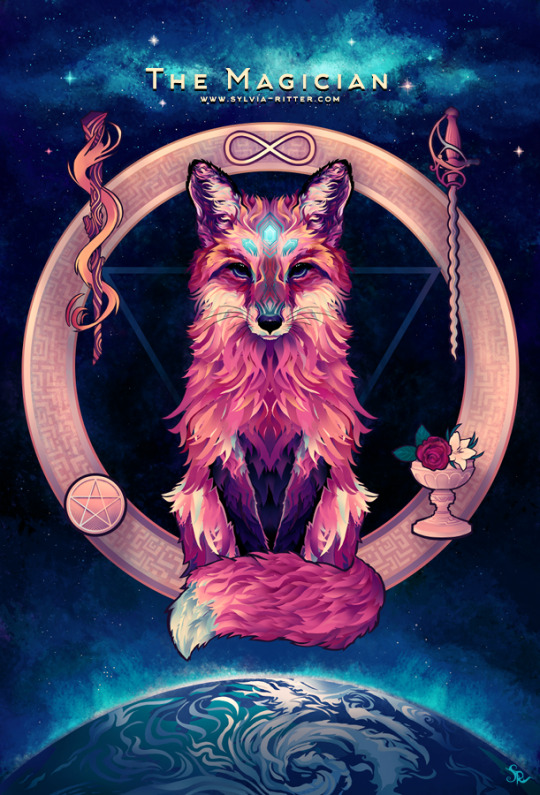
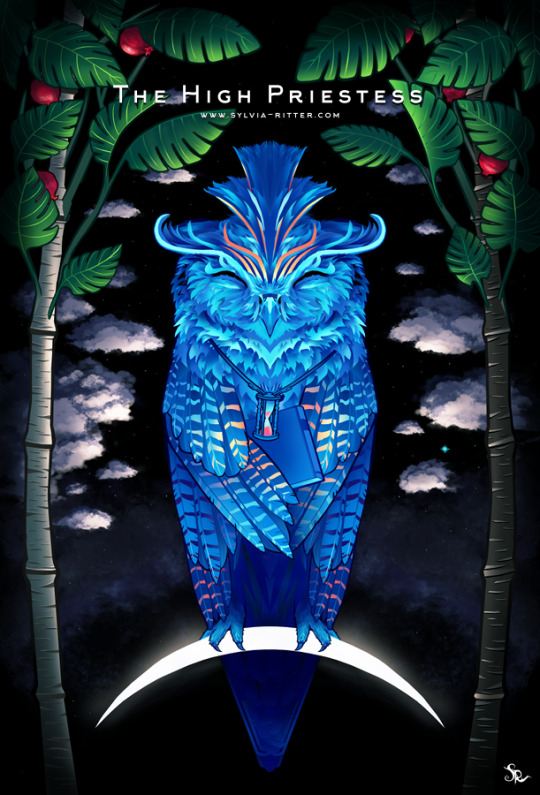

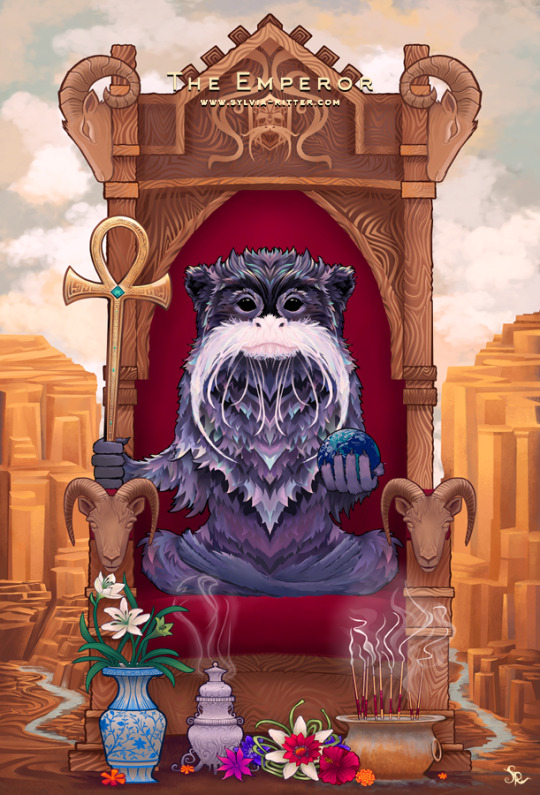
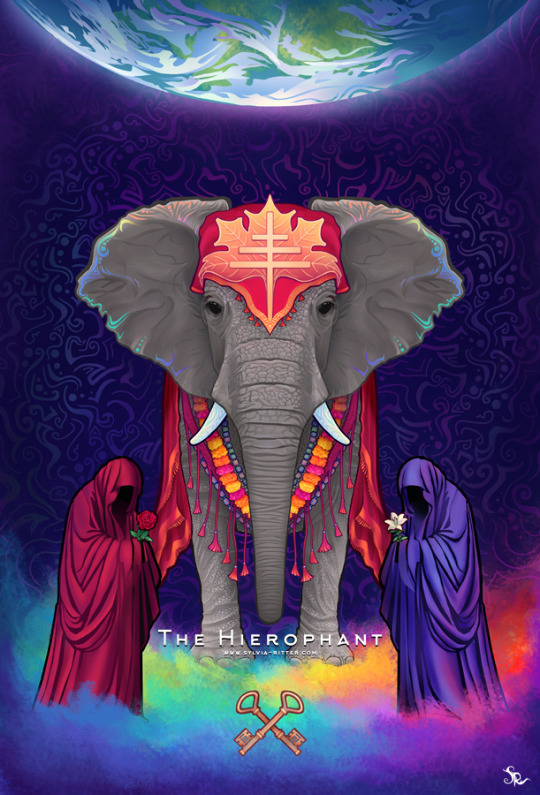
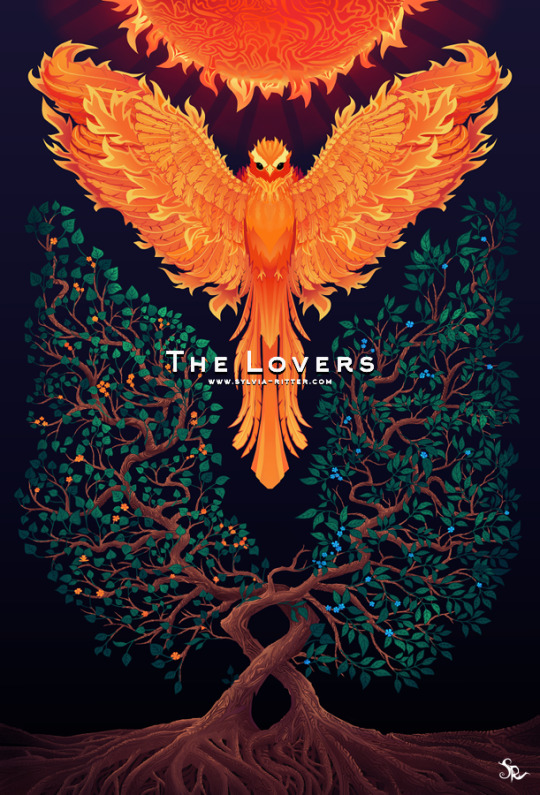
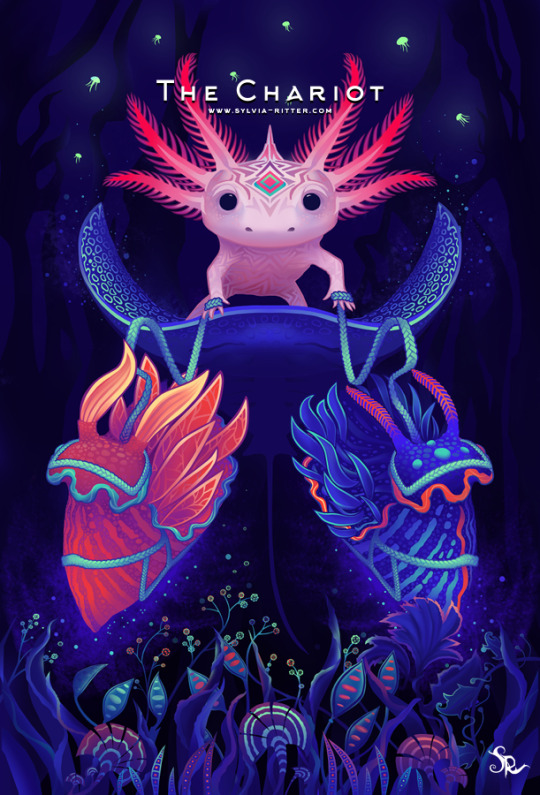
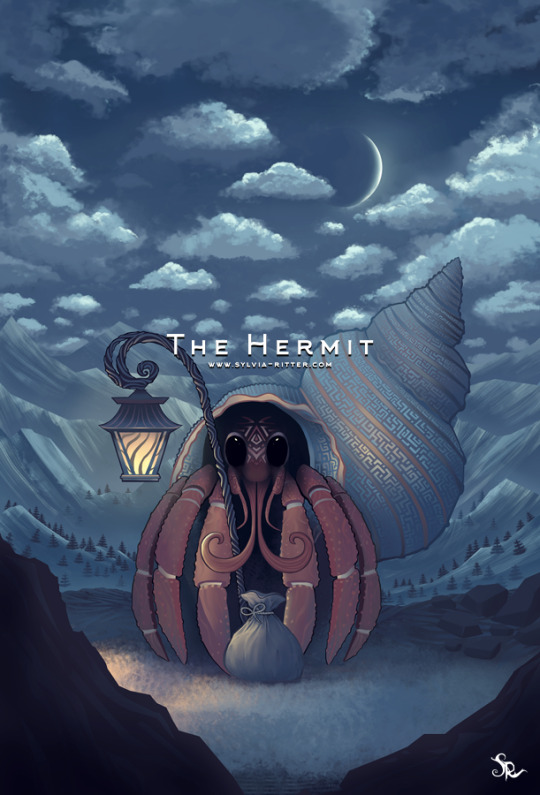

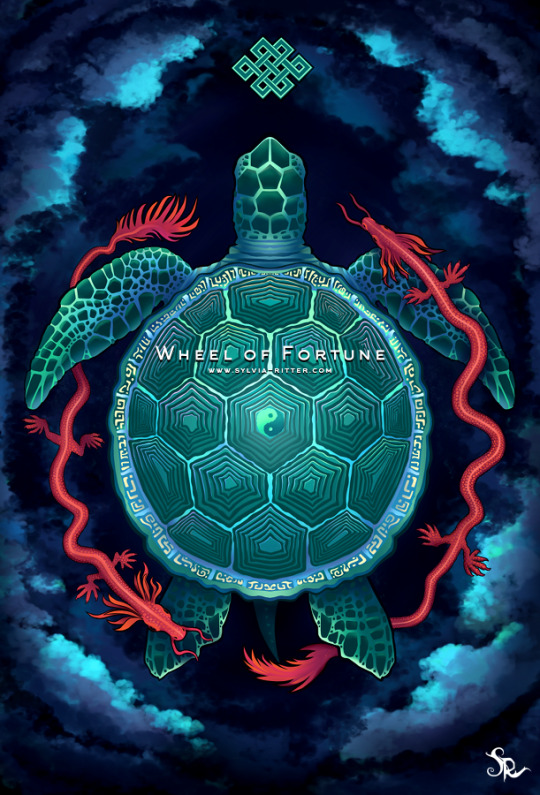
https://www.deviantart.com/sylviaritter
31K notes
·
View notes
Text
☀️Spells For Every Day☀️
A spell is a prayer of sorts- a wish sent out with great intention, in harmony with the universe. Why are spells performed on a certain day, with a specific herb and just the right color candle? This is how practical witches synchronize with the greater good and harmonize with the cycles of nature. Each day of the week has specific correspondences and meanings.

YOUR WEEK AT-A-GLANCE:
☀️ SUNDAY IS A DAY FOR HEALING AND VITALITY, AS WELL AS CREATIVITY AND NEW HOPE. THE COLORS FOR THIS DAY ARE GOLD, ORANGE, AND YELLOW, AND THE SCARED STONES FOR THIS THEY ARE ALSO IN THOSE COLORS: AMBER, CITRINE, CARNELIAN, AND TOPAZ. SUNDAY’S HERBS AND INCENSES ARE CLOVES, CEDAR, CHAMOMILE, FRANKINCENSE, AMBER, SUNFLOWER AND HELIOTROPE.
☀️MONDAY, OR MOON DAY, IS A DREAMY DAY FOR INTUITION , BEAUTY, WOMEN’S RITUALS, AND YOUR HOME. THE COLORS ARE SHINY SILVERS, PEARL, PALE ROSE, WHITE AND LAVENDAR, REFLECTIVE LIKE THE MOON. THE GEMS AND STONES ARE SIMILARLY SHADED MOONSTONE, PEARL, QUARTZ CRYSTAL, FLUORITE, AND AQUAMARINE. THE HERBS AND INCENSE ARE NIGHT-BLOOMING JASMINE, MYRTLE, MOONWORT, VERVAIN, WHITE ROSE, POPPY AND CAMPHOR.
☀️ TUESDAY IS THE DAY FOR ACTION, “MARS’S DAY” IS THE TIME FOR HIGH ENERGY IN YOUR CAREER, FOR PHYSICAL ACTIVITY, FOR AGGRESSION IN MEETINGS, AND FOR STRONG SENSUALITY. RED IS THE DAY’S COLOR, AND THE CORRESPONDING GEMS AND CRYSTALS ARE RUBY,GARNET,CARNELIAN,BLOODSTONE, AND PINK TOURMALINE. INCENSES AND HERBS FOR MARS’S DAY ARE RED ROSES, PINE, CARNATION, NETTLE, PATCHOULI,PEPPER AND GARLIC.
☀️ WEDNESDAY, OR WODEN’S DAY, IS WHEN THE PLANETS OF COMMUNICATION MERCURY AND CHIRON- RULE. THIS IS THE OPTIMUM TIME FOR WRITING, PUBLIC SPEAKING, INTELLECTUAL PURSUITS, MEMORY AND ALL OTHER FORMS OF COMMUNICATION. COLORS FOR THIS DAY ARE LIGHT BLUE, GRAY, GREEN, ORANGE AND YELLOW. THE CRYSTALS ARE SODALITE, MOSS AGATE, OPAL AND AVENTURINE. THE HERBS AND INCENSE ARE CINNAMON, PERIWINKLE,DILL,SWEET PEA,CINQUEFOIL, AND FERN.
☀️ THURSDAY , OR THOR’S DAY, IS THE DAY FOR BUSINESS, POLITICS, LEGALITIES, BARGAINING, GOOD FORTUNE, AND MATERIAL AND FISCAL WEALTH. THE COLORS ARE BLUE, PURPLE, AND TURQUOISE. AS YOU MIGHT SUSPECT, THE CRYSTALS ARE TURQUOISE, SAPPHIRE, AMETHYST, AND LAPIS LAZULI, SO FAVORED BY THE EGYPTIANS. THE HERBS AND INCENSES FOR THE DAY ARE SAFFRON, CEDAR, NUTMEG,PINE, OAK, AND CINNAMON.
☀️ FRIDAY IS RULED BY FREYA, THE NORDIC VENUS, GODDESS OF LOVE. FRIDAY IS ALL ABOUT BEAUTY, LOVE, SEX, FERTILITY, FRIENDSHIPS AND PARTNERSHIPS, THE ARTS, HARMONY AND MUSIC, AND BRINGING THE NEW INTO YOUR LIFE. THE COLORS ARE PALE GREEN AND DEEP GREEN, ROBIN’S EGG BLUE, PINK, AND VIOLET, AND THE CRYSTALS ARE EMERALD, PINK TOURMALINE, AND ROSE QUARTZ, AS WELL AS JADE, MALACHITE, AND PERIDOT. THE HERBS AND INCENSE FOR FRIDAY ARE APPLE, LILY,BIRCH,PINK ROSE,VERBENA,IVY,ROSE AND SAGE.
☀️ SATURDAY IS A TIME FOR PROTECTION,DISCIPLINE,DUTY, BINDING, FAMILY, MANIFESTATION, AND COMPLETION. SATURDAY’S CRYSTALS ARE AMETHYST, SMOKY QUARTZ, JET, BLACK ONYX, OBSIDIAN, AND DARKEST GARNET. THE INCENSE, PLANTS, AND HERBS FOR THIS DAY ARE IVY,OAK,RUE,MOSS,MYRRH, DEADLY NIGHTSHADE, MANDRAKE, HEMLOCK, AND WOLFSBANE. (MANY SATURNIAN HERBS ARE TOXIC, BE SURE TO EXERCISE CAUTION WHEN USING THEM).
9K notes
·
View notes
Text
might fuck around and let nature reclaim me
148K notes
·
View notes
Text

More greek-inspired pathologic art! In red figure this time 🏺🌾
1K notes
·
View notes
Text
How to Pick a Date for Your Spells
The first advice of absolute importance is to avoid starting anything during the Moon’s Void of Course. Things like interviews, important business meetings, initiating projects, and especially Spells likely won’t turn out well or will remain unfinished.
When planning a date for your Spell, it’s important to take into consideration the following things:
Moon Phase
Moon Sign
Day of the Week
Retrograde Planets
Make sure the above bullets points align with the goals of your Spell. We have a Moon Phase Planner for 2020 that has all the above information to help pick a date for your Spells!
For example, if we wanted to do a spell for Material Wealth:
December 24, 2020 is an excellent day because:
the Moon is Waxing and is close to a Full Moon
the Moon is in Taurus, the sign of luxury and material possessions
it’s a Thursday which is ruled by Jupiter - the planet of wealth and expansion
Venus is NOT Retrograde
Now keep in mind that these are guidelines for timing your spells with the best natural energy available. You can do a money spell any time you like (avoid the Void of Course Moon) but it may not have as much supportive energy compared to the above example. This is because of the reasons given in the example. Taurus, the ruler of wealth, is a much better sign for getting money compared to Cancer for example.
The following information will help guide you in planning a date for your Spells.
Moon in the Signs
Aries: —————
-Aries deals with energy, independence, competition, taking risks, the Self, and leadership.
-Do Spells that help with healing the physical body, advancing by overcoming competition, increasing vitality, first impressions, and with how you view yourself.
-Aries is a quick starter sign so it is a good to start things where much energy is needed; however it is also an impulsive sign so be sure to follow through with anything initiated during this time.
Taurus: —————
-Taurus deals with sensuality, material wealth, self-worth, and permanence.
-Do Spells for money, wealth, acquiring material things, improving your self-worth or self-esteem, and sensual love.
-Taurus is a steadfast and sometimes stubborn sign so it is good for initiating anything that you want to last.
Gemini: —————
-Gemini deals with communication (all forms), details, correspondence, short distance travel, people close to you such as siblings relatives and neighbors.
-Do Spells for helping communication go smoothly in case of a difficult conversation, improved relations with those close to you, help in all forms of writing activities such as emails, letters, calls, or professional writing.
- Gemini is a communicative sign so it is a good sign to support any form of communication.
Cancer: ————— -Cancer deals with the family, home, nurturing, personal roots, emotional foundations, land, and property.
-Do Spells to help with improving family life, finding a good home to buy, cleansing/banishing/protecting the home, real estate transactions, and healing from childhood trauma.
-Cancer is a nurturing sign with motherly energy so it is a good sign for Self-love activities.
Leo: ————— -Leo deals with romance, creativity, leadership, confidence, and children.
-Do Spells to help with romance, love affairs, improving creativity, leadership ability, confidence, success in the limelight, and career advancement in creative fields such as art, music, or acting.
-Leo is a proud sign that enjoys attention so it is a good sign for being “center-stage”.
Virgo: ————— -Virgo deals with health, service, routines, details, and diet.
-Do Spells to help with improving health, starting daily routines, or in performing your work duties.
-Virgo is a meticulous sign so it is a good sign for tasks requiring attention to detail.
Libra: ————— -Libra deals with relationships, partnerships, balance, legally binding contracts, and the law.
-Do Spells to help with improving interpersonal interactions, attracting a marriage partner or business partner, making cooperative relationships go smoothly, or getting a divorce.
-Libra is a diplomatic sign so it is a good sign for making or breaking contracts.
Scorpio: ————— -Scorpio deals with the occult, secrets, the subconscious, research, sex, power, and transformations.
-Do Spells to help with concealing or revealing secrets, increasing psychic powers, any form of divination, personal transformations, attaining power, starting research projects, and attracting sexual partners.
-Scorpio is a transformative sign so it is a good sign for doing shadow work.
Sagittarius: ————— -Sagittarius deals with the law, religion, philosophy, higher education, learning, foreign places, and long distance travel.
-Do Spells to help with getting into college, studies, acquiring books and educational material, and traveling long distance safely.
-Sagittarius is a scholarly sign so it is a good sign to aid any kind of learning.
Capricorn: ————— -Capricorn deals with the career, profession, honor, authority, business, the public image, and structure.
-Do Spells for success in career, professional advancement, gaining authority, starting a business, getting organized, and building something through hard work.
-Capricorn is a results oriented sign so it is a good sign to promote perseverance and self-discipline in achieving some desired outcome.
Aquarius: ————— -Aquarius deals with friends, communities, organizations, social activities, goals, group goals, freedom, and technology.
-Do Spells for help with attracting friendships, success in group activities and community events, creating and achieving goals, and attaining freedom.
-Aquarius is a unique sign so it is a good sign to help in becoming more creative and unique.
Pisces: ————— -Pisces deals with art, intuition, the spiritual, psychic ability, secrets, and the unconscious.
-Do Spells for help with revealing and dealing with psychological problems, increasing psychic abilities and intuition, divination, dream work, and improving artistic talents.
-Pisces is a psychic sign so it is a good sign to help develop psychic abilities.
Moon Phases
Full Moon - the highest point in the moon’s cycle where its energies are at its peak. This is an excellent time for divination.
Note: when a Full Moon occurs twice in a month (October 31 2020) it is considered a Blue Moon. This is similar to a Full Moon but has more power
Waning Moon - the moon here is decreasing to a New Moon so its energies are that of degeneration. Use this time for banishing, cleansing, destruction or bringing anything to an end such as a relationship or bad habits.
New Moon - on the waning side of the New Moon, it has an ending type of energy as the moon is “disappearing”. On the waxing side it has the energy of potential, ready for new beginnings.
Waxing Moon - a time of growth as the light of the moon increases to its peak at the Full Moon. Use this time to do Spells for building something up in your life such as health, new friendships.
Note: it is better to do the Spell closer to the Full/New Moon depending on the goal. Unless you want to do the Spells for multiple days, such as cleansing/banishing, you can start right after the Full Moon and end on the New Moon. This supports the goal of removing bad energy.
Days of the Week
Monday: —————
Monday is the day of the Moon. The moon carries feminine psychic energy and is a great day to start developing psychic abilities, perform divination, cleanse the home, or banishing rituals.
Tuesday: ————— Tuesday is the day of Mars. Mars carries the masculine warrior energy and is a great day for doing Spells where much energy is needed. It is also a good day for black magick where the result is quick and active. Think of the moment when two swords clash.
Wednesday: ————— Wednesday is the day of Mercury. Mercury rules all forms of communication, documents, short-distance travel, and health. This is a great day for doing Spells related to health, improving communication ability, difficult conversations, and safe travels.
Thursday ————— Thursday is the day of Jupiter. Jupiter is the greater benefic and rules luck, opportunities, expansion, higher education, philosophy, foreign places, religion, and the law. Use this day for Spells that deal with expansion and opportunities, safe long-distance travels, and educational study.
Friday ————— Friday is the day of Venus. Venus rules love, beauty, cosmetics, money, luxury, jewelry, and material possessions. Use this day for Spells to bring you money, acquire material possessions, and for successful cosmetic procedures.
Saturday ————— Saturday is the day of Saturn. Saturn authority, structure, work ethic, endurance, delays, restrictions, boundaries, limitations, and decay. This is a great day for black magick that acts slowly or for binding or restricting another. Also great for Spells requiring discipline such as breaking habits.
Sunday ————— Sunday is the day of the Sun. The Sun rules vitality, charisma, money, fame creativity, leadership, the identity, and the Self. This is a great day for doing Spells that deal with us personally, such as our character or personality for example.
Our Moon Phase Planner for 2020 has all of this information along with the times for the Void of Course Moon, the Lunar Ingresses, and Retrograde Planets. So get your copy to let the Moon support your Spells!
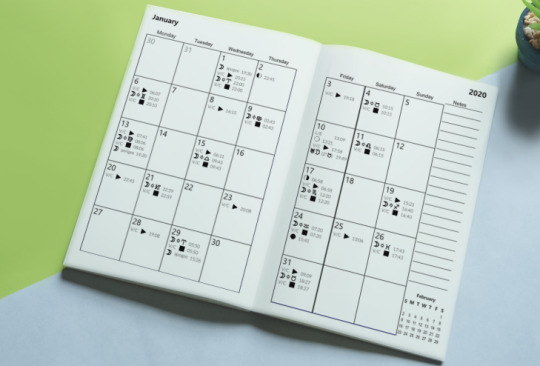
4K notes
·
View notes
Text
Incense correspondences

🕯Allspice - Money, fortune, luck, prosperity
🕯Aloe - Higher vibrations, prosperity, strength, love
🕯Amber - Bliss, healing, comfort, love
🕯Anise - Balance, meditation
🕯Basil - Protection, luck, focus, faithfulness, money, love divination, courage
🕯Bay - Mental powers, prophetic dreams
🕯Bergamont - Wealth, happiness, focus, protection, courage, balance, motivation
🕯Cardomom - Focus, courage, motivation, clarity
🕯Cedar - Purification, love, healing, psychic powers, nightmares
🕯Chamomile - Protection, calm, peace, sleep
🕯Cinnamon - Protection, wealth, success, prosperity, psychic powers
🕯Clove - Cleansing, purification, wealth, stopping gossip, healing, success, divination, protection
🕯Copal - Purification, happiness, love, protection
🕯Citrus - Brightness, courage, confidence, luck, accomplishing goals
🕯Dragons Blood - Cleansing, energy, courage, purification, love, strengthening magical powers
🕯Eucalyptus - Cleansing, protection, purification, healing
🕯Frankincense - Cleansing, astral travel, courage, purification, consecration, protection, meditation, luck
🕯Gardenia - Love, relationships, healing, peace
🕯Ginger - Money, love, power
🕯Heather - Calling and conjuring
🕯Honeysuckle - Wealth, bliss, relationships, healing
🕯Jasmine - Prophetic dreams, love, wealth, purification, astral projection, purification
🕯Juniper - Breaking curses and hexes, protection, psychic powers, healing, calmness
🕯Lavender - Sleep, love, cleansing, happiness, relaxation, healing
🕯Lemon - Love, healing, purification
🕯Mint - Cleansing, conjuring, money, sex, healing, protection
🕯Nutmeg - Psychic powers, meditation, prosperity
🕯Orange - Love, divination, wealth, luck
🕯Peppermint - Healing, animal magic, energy
🕯Pine - Purification, banishing, wealth, strength, grounding, cleansing, breaking hexes, healing
🕯Rose - Prophetic dreams, courage, fertility, blessings, healing, love
🕯Rosemary - Depression, purification, healing, youth, fairies, sleep
🕯Sage - Protection, purification, cleansing, wisdom, healing
🕯Sandalwood - Conjuring, spirituality, protection, healing, astral projection, wishes
🕯Sweetgrass - Conjuring, positive energy
🕯Thyme - Purification, healing, health.
🕯Vanilla - Sex, love, psychic powers
🕯Violet - Luck, love, wisdom, healing, protection
🕯Wormwood - Psychic powers
🕯Ylang-ylang - Hapiness, love, harmony
13K notes
·
View notes
Text
Tarot Card Info for Beginners

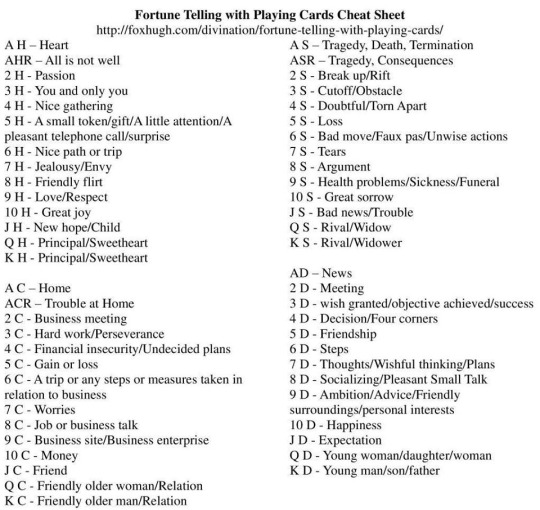

10K notes
·
View notes
Text
it’s the 21st day of the 21st year of the 21st century.
you can only reblog this today.
204K notes
·
View notes
Text
Why Yule Needs to Stay Creepy
“…There’ll be scary ghost stories and tales of the glories of Christmases long, long ago…”
So I have been thinking about our Contemporary conceptualization of the Christmas season a lot lately and it’s kind of interesting. So many things we associate with Christmas – Christmas trees, greeting cards, Santa Claus, his reindeer and elves, gift-giving in general – all of these things came into vogue in the 19th Century and are very sticky-sweet, in my opinion. They’re lovely, but not filling. If we just scratch the surface of the Christmas we know and love and peek back into its history, we find something much meatier.
Before the cheerful Christmas tree, a number of other plants were associated with Christmas. The holly, associated with sacrifice and the blood of Christ, and the parasitic mistletoe, associated with the death of Baldur in Norse mythology – these were the plants associated with Christmas before the Christmas tree became the standard.
Also, the Yule log. The Yule log, meant to provide light on the darkest night of the year, was a magic charm in and of itself. If it did not burn through the night, it would be a terrible omen. By watching the fire and coals of the Yule log, one could also predict who would give birth and who would die in the coming year.
When our simple Santa Claus is reduced to his predecessors, one is left with Odin, ancient Norse God of battle, Saint Nicholas, the canonized former bishop of Turkey, and Father Christmas, the hard-drinking gluttonous representation of holiday merriment. And all of them brought ghastly friends – Odin, the spirits of the Wild Hunt and Saint Nicholas, his helpers (including Knecht Rupert, Krampus, etc.). Father Christmas, more of a personification of the season than a night visitor, undoubtedly brought many hangovers.
Before stories about reindeer, snowmen, or things of that ilk, there were ghost stories. Charles Dickens did not invent the Christmas ghost story in “A Christmas Carol,” but popularized an already-existing folkloric trend. If we look to the old tales of Christmas, we find stories about witches that rode the night air, cursing the birth of the Savior. There are stories about fairies, ghosts, and Devils that wreak havoc, frightening livestock and damaging property. In an era before television or radio, homemade storytelling was one of the primary forms of entertainment. And winter was the storytelling season.
You also have mumming, wassailing, and caroling – dressing up in colorful costumes and (sometimes drunkenly) begging for money door-to-door. As John Grossman notes in his book “Christmas Curiosities,” Christmas before the Contemporary Period resembles our Halloween more than it resembles the Christmas we know now.
Let us not forget, those of us who acknowledge the Wheel of the Year, that the season of darkness extends from Halloween to Christmas. This darkness only begins to fade when we gain back the Sun at the Winter Solstice. From Halloween to Christmas, the dead may roam the Earth and weird things may happen. In his classic “Mastering Witchcraft,” Paul Huson notes that Yule is not a time for pleasant spell work, but cursing! It is a time of dark magic and mystery. And we need this time. To understand the light, we must understand the darkness – the witches, ghosts, and Devils of the old Yuletide. Like the trees that go dormant, we must embrace the darkness of winter to grow and thrive.
12K notes
·
View notes
Link
A workshop presented by a great friend and Author Erik about the Ladies Fae. This was recorded at Raven’s Knoll during the Witches Sabbat and I was in the audience for most of this. I own his book and it’s absolutely amazing!
The old-timers of the French-Canadian countryside were well acquainted with the many facets of the Ladies Fae. In traditional stories known as les contes, the questing hero often encountered otherworldly beings who could offer magical assistance (or hindrance…) to them on their journey throughout the “Otherlands” beyond the forest. These beings, who could manifest in myriad forms, often revealed themselves to be powerful women with a strong grip on an individual’s fate. In the early tradition, the fées could be a bane or a boon to would-be travelers longing to fulfill their life’s purpose… or sense of adventure. Throughout the vision-journey hard lessons, sage advice and enchanted gifts were seen as having a lasting effect on those who dared to encounter them. What were the rules of the exchange? How did one interact with these powerful ladies? In what way can we revive the old belief which afforded them a prominent place in our conscious magical undertakings? These are the questions we will come to learn as a group, based upon the lore we have preserved. By the end of the workshop it is hoped that we have come to know the means of engaging with Les Dames Fées (and other related French-Canadian faefolk) as well as how to draw profound meaning from the encounter.
Prepared by Erik Lacharity and Morrigane Feu (Presented by Erik)
232 notes
·
View notes
Text
**ON STONES : SOME PIECES OF ADVICE & LORE FROM FRENCH TRADITIONAL WITCHCRAFT**

French soil is rich and diverse because of the variety of landscapes the country provides. Sea, sand, extinct volcanos and green mountains flourish along forests, arid countys and rocky plains. Snow, ice, sun and rain molded the geological aspects of the territory and shaped the land we know today. Gemstones and semi-precious crystals are abundant, but before even starting to consider dwelling in those, there also exist a few rocks, pebbles and stones that various countryside witchcraft practices recognized and used long ago. Here follow a few of them.
MYTHICAL ORIGINS
It is said that underground currents and flows merge to form a great serpent. This serpent sometimes arises, unearthed, where lie sacred wells and springs, thus giving them great healing virtues. The serpent dug caves for fairies to dwell in (we French people believe fairies to reside in grottos : many regions have their own « Grotte des Fées »); then for Men to live and inhabit. Its head is stud with bright shining gemstones, its body set with marvelous crystals with vibrant colors and powerful properties. The serpent is a mythical guardian, and the first, primitive and primal Genius Loci.
Stones store the virtues of the spirit inhabiting the land they dwell on.
GREAT STONES
Menhirs and dolmens still draw people today, weither for pilgrimage or individual quests. They were considered gatekeepers of the underworld. They are mostly known for the healing rituals and other transfer medicine they convey. Other uses include fecundity rites where women would come to rub their genitals on the most phallic parts (the Pierre Piquée, Aubière, Puy-de-Dôme).
Wobbly stones were used to baptize children : one would leave the newborn child at the basis, then shake the stone to gift them with strength, happiness and protection. Some say stones were able to move on their own accord, adding an extra blessing to the rite.

HOLED STONES
Known as hagstones in the Bristish Isles, French people name them « pierres trouées », « pierres à cupules », « pierres à empreintes ». These are stones naturally pierced with a hole by water (mostly rain and saltwater). They are powerful healing allies (fever, afflictions from the eyes, sterility, skin disease, etc). With stones large enough, placing the body part in need directly inside the hole - the head, a limb, a finger, was said to cure anything form intellectual deficiency to sprains and warts.
These stones are said to bear the marks of spiritual beings such as angels, demons, mythical heroes, giants (Gargantua) or saints.
DOMESTIC STONES
This witch comes from the Alpine regions, where one is able to dig up their own quartz in the mountains or drag the rivers to discover large pieces of quartz with diverse inclusions (sometimes even finding gold, if the Dame Blanche - White Lady - doesn’t catch you first). Once, in Marseille, I managed to unearth big chunks and nuggets of smoky quartz the size of my palm while hiking on an inlet. It is said quartz comes from the old glaciers around : these are pieces of ice so ancient it doesn’t melt anymore.
When I was a child, I also spent hours looking around for small, shiny white stones : they were said to be « pierres de lune » (proper moon stones) that cracked and felt directly on Earth for us to find if we were lucky enough. I was thrilled to own myself a very small part of the Moon and treasured my discoveries.
A lot of common rocks, not especially pretty nor attractive, but available from the very landscape you stand on, hold some wonderful virtues for the one who would ignore their dull exterior and know where to look.

One of the most popular stone is the well-known « pierre à venin » (venom stone) - either granite, quartz or variolite, sometimes schist or limestone. These are small black stones with green stains. They come from various fossils, prehistoric tools or natural stones and are also called « pierres-serpent » (snake stones) or sometimes « pierres de salamandre » (salamander stone). One would need to polish them on sheep skins before using them. They were said to be body parts belonging to old big reptiles, snakes and other venomous beings long gone - for example, urchin fossils were known as « œuf de serpent » (snake egg). Some village practitioners also claim to find them in viper nests, or in places where snakes would fight - thus making the stone a stone made from the snake’s slime. The snake would dribble and roll the stone with its body when fighting, giving it its round, spherical shape.
One would keep their stones in jute bags or store them in terra cotta (clay) containers.
Uses : Great for snake bites, bug stings and skin diseases. Leave the pierre à venin in water for anywhere between half an hour to a full day, then drink half of it and pour the remaining water on the affected body part to cure the disease away. They were also hung on beasts (cattle, dogs, cats…) to protect them.
The « pierre de crapaud » (toad stone) is named after its shape and color making it look like a toad. Some say you could find it inside the toad’s head, some say it is the toad brain. Used just like the pierre à venin, but dry, by rubbing the stone on the needing area.
The « pierre des yeux » (eyes stone) is a stone found in swallows nests. It can cure any eye disease.
The « pierre du sang » (blood stone) is a red-colored pebble used to stop haemorrhagies and other blood problems by direct application.
The « pierre de la Croix » (Cross stone) is a flat gray pebble where you can see a white pattern evoking the Cross. These were especially popular in Bretagne and Auvergne, and were known as powerful talismans. They protect their bearer from the evil eye, nocturnal fears, spellcraft, and can also cure one from haemmorhages, diarrhea and rabies.
The « pierres des femmes » (women stones) are limonite nodules known to help women in labour, quickening the delivery, but interestingly enough they were also used, if combined with the right sacred plants, in abortive rites and preparations.
Other stones also include the « pierre de la tête » (head stone, used against migraines - often quartz pebbles); « pierre de la peste » (plague stone, a black pebble); « pierre des dents » (teeth stone) or « pierre des cauchemars » (nightmare stone, holed silex hung on the bedroom doors or put under the bed to prevent bad dreams).

***
(Appreciatively sourced and translated from BERTON H., Sorcellerie en Auvergne, Éditions De Borée, 2003. All rights reserved.)
2K notes
·
View notes
Text
The distaff Gospels
The Distaff Gospels (Les Evangiles des Quenouilles) is an Old French fifteenth-century collection of popular beliefs held by late medieval women, first published in 1480. It was edited by Fouquart de Cambray, Duval Antoine and Jean d'Arras and published at Bruges by Colart Mansion. The narrative takes place within the context of a gathering of women who meet with their spindles and distaffs to spin. They discuss folk wisdom related to their domestic lives, including controlling errant husbands, predicting the gender of future offspring and curing common ailments.
https://en.wikipedia.org/wiki/The_Distaff_Gospels
I found the book in my local library, the French medieval witchcraft and superstitions were really something ! There was spells for every moment in life at that time (sex, birth, marriage, death, fidelity of spouse, cattle, weather, religion, harvest, hexes…) A great historical witchcraft testimony, but I doubt that anyone would try any spell in this book at our modern days :)
389 notes
·
View notes

